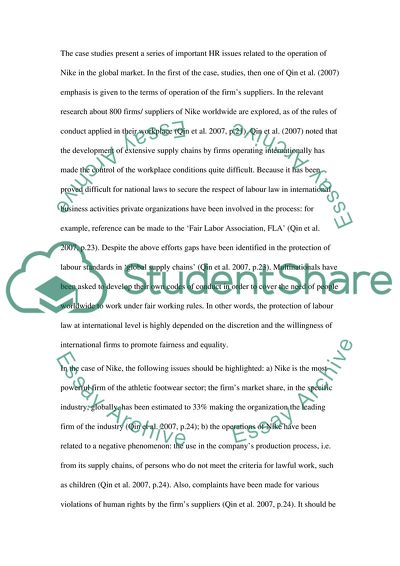Cite this document
(HR perspective from Nike case study Essay Example | Topics and Well Written Essays - 2500 words, n.d.)
HR perspective from Nike case study Essay Example | Topics and Well Written Essays - 2500 words. https://studentshare.org/human-resources/1815314-hr-perspective-from-nike-case-study
HR perspective from Nike case study Essay Example | Topics and Well Written Essays - 2500 words. https://studentshare.org/human-resources/1815314-hr-perspective-from-nike-case-study
(HR Perspective from Nike Case Study Essay Example | Topics and Well Written Essays - 2500 Words)
HR Perspective from Nike Case Study Essay Example | Topics and Well Written Essays - 2500 Words. https://studentshare.org/human-resources/1815314-hr-perspective-from-nike-case-study.
HR Perspective from Nike Case Study Essay Example | Topics and Well Written Essays - 2500 Words. https://studentshare.org/human-resources/1815314-hr-perspective-from-nike-case-study.
“HR Perspective from Nike Case Study Essay Example | Topics and Well Written Essays - 2500 Words”. https://studentshare.org/human-resources/1815314-hr-perspective-from-nike-case-study.


